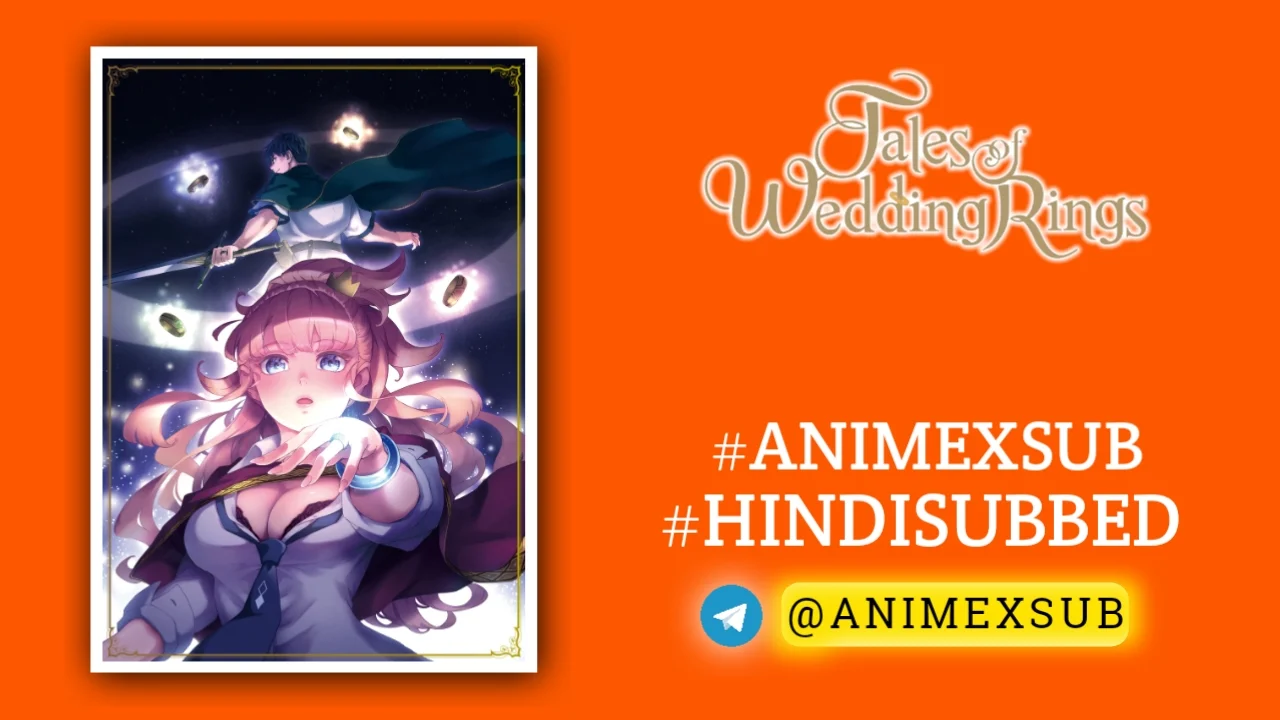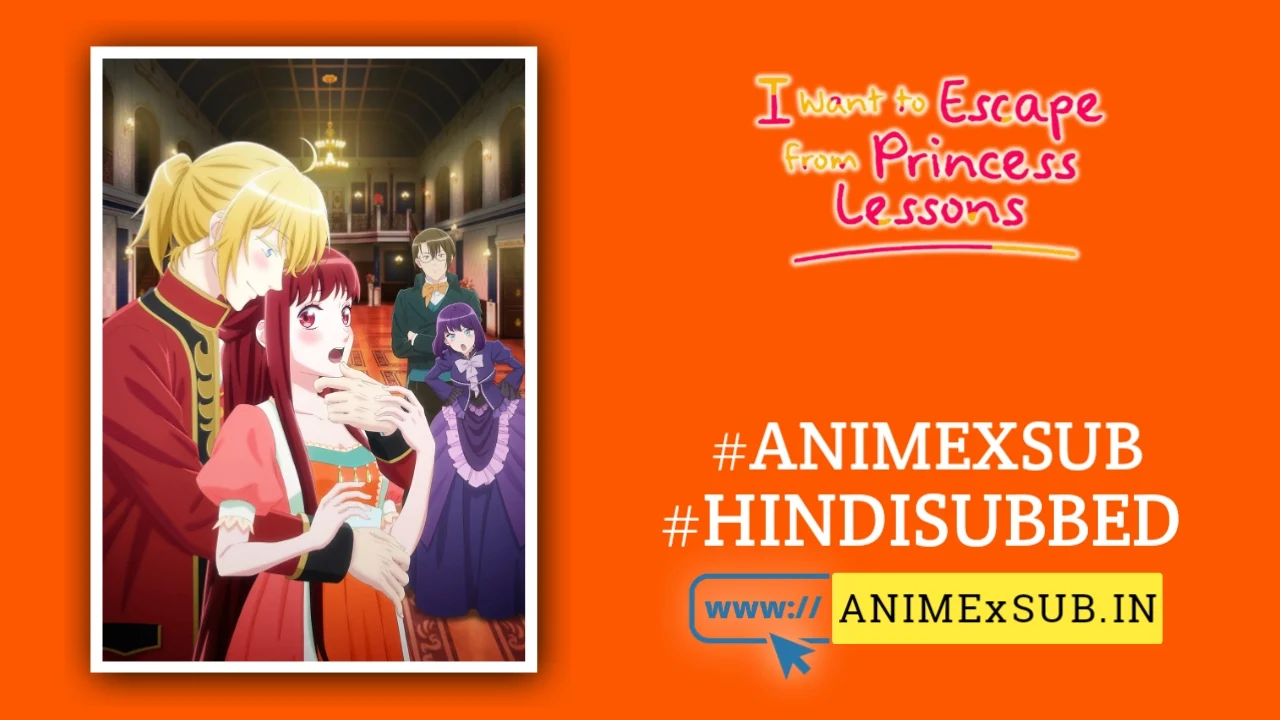
Good Luck! Ninomiya-kun Season 1 Hindi Subbed [12/12] | Goshuushou-sama Ninomiya-kun Hindi Sub

Goshuushou-sama Ninomiya-kun
Good Luck! Ninomiya-kunSynopsis
Shungo is a normal high school student living in a huge house. One day, his sister Ryoko sends Mayu and Mikihiro Tsukimura, two siblings, to live with him to help Mayu overcome her problem. Mayu's problem: androphobia (fear of men), and Ryoko wants Shungo to help her overcome. How? By making Mayu and Shungo share the same room, bed, and even take baths together. To make things even worse, Reika Hojo, the student-council chair, somehow ends up becoming their maid. (Source: Wikipedia)
Characters
Descent of the Succubus: The Chaotic Arrival That Shatters Shungo’s World
In the heart of a seemingly ordinary high school life, Shungo Ninomiya’s routine is upended by an aerial spectacle straight out of a fever dream. A military-grade helicopter touches down on the school campus, disgorging Mayu Tsukimura—a pink-haired enigma with eyes wide in terror and an aura that turns every male gaze into a trance. This isn’t mere coincidence; it’s the machinations of Shungo’s absentee sister, Ryoko, a battle-hardened mercenary who has orchestrated this invasion to address Mayu’s dire affliction: androphobia, a paralyzing fear of men compounded by her true nature as a succubus. Her powers, which involuntarily ensnare admirers, threaten to consume her if left unchecked, and Shungo—trained in combat yet disarmingly polite—becomes the unwilling key to her rehabilitation. What follows is a whirlwind of forced proximity: shared bedrooms, synchronized baths, and mock confessions that blur the line between therapy and torment, setting the stage for a narrative that dances on the edge of farce and folklore.
Shadows of the Androphobic Enchanter: Mayu’s Inner Demons and Succubus Legacy
Mayu Tsukimura embodies the tragic irony at the core of this tale—a succubus whose very essence craves intimacy yet recoils from it with visceral dread. Voiced with a high-pitched fragility by Mai Kadowaki, her character delves into the psychological depths of phobia, where every accidental brush against Shungo triggers a cascade of panic attacks, only to evolve into tentative trust through Ryoko’s unorthodox “training regimens.” Unlike traditional succubi who thrive on seduction, Mayu’s lineage twists the myth: her abilities risk draining life force upon emotional climax, a curse that echoes ancient folklore but manifests in modern, comedic mishaps like schoolyard stampedes of mesmerized boys. This duality—vulnerable ingenue by day, latent temptress by night—elevates her beyond trope, revealing layers of suppressed memories from a childhood intertwined with Shungo’s past, hinting at a forgotten promise that could redefine her fate. Her arc isn’t just about overcoming fear; it’s a meditation on the isolation of otherworldly heritage in a human world, where control means survival.
The Mercenary’s Gambit: Ryoko Ninomiya’s Ruthless Calculus of Care
Ryoko Ninomiya, Shungo’s enigmatic older sister, operates as the shadowy architect of chaos, her mercenary background infusing the story with tactical precision and unyielding resolve. Absent for missions that span continents, she returns via video feeds and elaborate schemes, wielding a camcorder like a weapon to document—and exacerbate—the household’s absurdities. Voiced by Michiko Neya, her portrayal captures a blend of maternal ferocity and playful sadism, pushing Shungo into scenarios that test his limits while ostensibly aiding Mayu. Yet beneath the humor lies a profound loyalty: Ryoko’s methods, born from her own hardened life, reflect a deeper philosophy on exposure therapy, where vulnerability forges strength. Her interactions with Mikihiro Tsukimura, Mayu’s incubus brother, add intrigue, as their alliance hints at larger supernatural networks and past alliances that could unravel the family’s fragile equilibrium. Ryoko isn’t merely comic relief; she’s the narrative’s pulse, driving conflicts that expose the raw underbelly of familial bonds in a world of hidden powers.
Maid of the Elite Enigma: Reika Houjou’s Descent into Domestic Intrigue
Enter Reika Houjou, the haughty student council president and heiress to the sprawling Houjou conglomerate, whose poised exterior crumbles under blackmail into reluctant maid service at the Ninomiya residence. Voiced masterfully by Miyuki Sawashiro, Reika’s tsundere archetype is reimagined with succubus undertones—her alternate personality, a darker, possessive force, emerges in moments of jealousy, revealing a childhood connection to Shungo that predates the current mayhem. Blackmailed by a compromising video of her failed seduction attempt, she navigates dual roles: corporate titan influencing policies by day, frilly-aproned servant by night, all while grappling with her own latent powers that mirror Mayu’s but amplified by ambition. This internal schism—proud ojou-sama versus vulnerable alternate self—creates riveting tension, as Reika’s schemes to reclaim Shungo often backfire into self-sabotage, exploring themes of identity fragmentation in a high-stakes social hierarchy. Her presence transforms the household into a battleground of egos, where maid duties mask deeper yearnings for connection.
Fractured Alliances and Hidden Rivalries: The Supporting Cast’s Web of Motives
Beyond the central trio, a tapestry of secondary figures weaves complexity into the succubus saga. Mikihiro Tsukimura, Mayu’s incubus brother voiced by Ken Narita, serves as a protective foil, his own seductive prowess contrasting Mayu’s fears while forming an uneasy partnership with Ryoko that sparks whispers of ulterior motives. Childhood friend Hinako Ayakawa, brought to life by Satomi Akesaka, injects innocent rivalry, her unrequited affection for Shungo clashing with the newcomers in heartfelt schoolyard confrontations. Then there’s Mitsuru Hosaka, Reika’s loyal aide voiced by Kôki Miyata, whose bungled seduction plots add layers of slapstick espionage, and the enigmatic Shinobu Kirishima, a ninja-like operative whose stealthy interventions hint at broader conspiracies within the Houjou empire. These characters aren’t mere satellites; they embody the ripple effects of supernatural intrusion, from jealous classmates forming anti-Shungo cabals to corporate spies lurking in the shadows, collectively illustrating how one family’s anomaly disrupts an entire ecosystem of relationships and secrets.
Ecchi Eclipse and Folklore Fusion: Visual and Auditory Alchemy in 2007’s Anime Landscape
AIC Spirits’ adaptation, airing from October to December 2007, captures the light novel’s essence through a visual style that marries generic shōnen aesthetics with bold ecchi flourishes—oversized eyes for emotional emphasis, fluid combat sequences blending martial arts with supernatural flair, and meticulously detailed fanservice moments that prioritize physics-defying animations over subtlety. The 12-episode structure favors episodic hijinks, like the infamous “ramen mission” where swimsuit-clad heroines stir broth in a haze of unintended intoxication, or a booby-trapped island escapade that subverts beach tropes with armed ambushes. Audio-wise, the duet opening “Yubikiri” by Kadowaki and Sawashiro pulses with playful tension, while the ending “Fure Fure Pon Pon!” injects bubbly energy, complemented by a score that shifts seamlessly from comedic bounces to dramatic swells. This fusion of 2000s anime tropes with succubus mythology—reimagining demons as flawed humans—marks a pivotal experiment in blending harem comedy with action, though its unpolished edges, like inconsistent character proportions, reflect the era’s transitional animation techniques.
Therapeutic Torments and Trope Subversions: Dissecting the 12-Episode Odyssey
Season 1 unfolds across 12 self-contained yet interconnecting chapters, each a microcosm of escalating absurdity. Early episodes focus on immersion tactics, from Episode 1’s helicopter drop and bed-sharing debacles to Episode 4’s school festival where Mayu’s powers incite a near-riot, forcing Shungo into heroic interventions that showcase his mercenary training. Mid-season pivots to rivalries, with Reika’s maid induction in Episode 3 leading to Episode 7’s “ninja chase” through urban shadows, blending stealth humor with heartfelt revelations. The ramen-centric Episode 8 stands as a pinnacle of situational comedy, its “mushroom samba” sequence a delirious parody of domestic bliss gone awry. Later arcs deepen the lore: Episode 10’s island survival tests alliances amid traps that Mayu unwittingly disarms, while the finale in Episode 12 culminates in a wham revelation of childhood pacts and succubus heritage, resolving phobias but leaving romantic tensions unresolved. This structure subverts expectations by interspersing action with introspection, turning what could be rote ecchi into a commentary on consent and growth, though late-clumped backstories occasionally strain pacing.
Critical Echoes Through Time: Legacy of a Flawed Yet Enduring Harem Experiment
Reception for Good Luck! Ninomiya-kun has been a polarized mirror to the mid-2000s anime boom, with MyAnimeList users averaging a 6.7/10 for its “decent comedy/ecchi” vibes, praising episodic laughs like the ramen frenzy but critiquing its “horrible plot and too many cliches.” 1 Anime News Network echoes this with a 6.68 weighted score, noting its functionality amid a “crowded anime boob show market” but lamenting underdeveloped depth. 4 THEM Anime Reviews dismisses it as forgettable fanservice, urging viewers to “keep looking” for sauciness elsewhere, 0 while Anime-Planet reviewers appreciate situational humor and voice acting, calling it “enjoyable if you like series of this type” despite standard harem predictability. 3 Otaku USA highlights its “tired tropes” and “muddled mess,” yet concedes cuteness in character designs. 8 Over time, its legacy endures on platforms like Crunchyroll, where fans revisit for nostalgic ecchi, but it remains a cautionary tale of untapped potential—strong in character voice work and myth twists, weak in narrative innovation, ultimately a product of its era that rewards tolerance for indulgence over profundity.
Eternal Allure of the Unresolved Vow: Thematic Depths and Uncharted Horizons
At its essence, Good Luck! Ninomiya-kun probes the succubus archetype through a lens of empathy, transforming demonic seduction into a metaphor for emotional barriers and the perils of unchecked desire. Themes of phobia therapy via forced intimacy raise ethical quandaries, mirrored in folklore where succubi embody forbidden longing, yet here they’re humanized—Mayu’s fear a shield against her lethal allure, Reika’s duality a struggle for self-acceptance. The series critiques harem dynamics by infusing them with action stakes, like Shungo’s “Let’s Get Dangerous!” moments that prioritize protection over possession, subverting the passive protagonist trope. Unresolved elements, such as the pinky promise tying past to present, leave room for speculation on sequels that never materialized, pondering if true connection can transcend supernatural curses. In a genre often dismissed as superficial, this adaptation uncovers poignant truths about vulnerability, making it a flawed gem that lingers in the mind long after the credits roll.


















